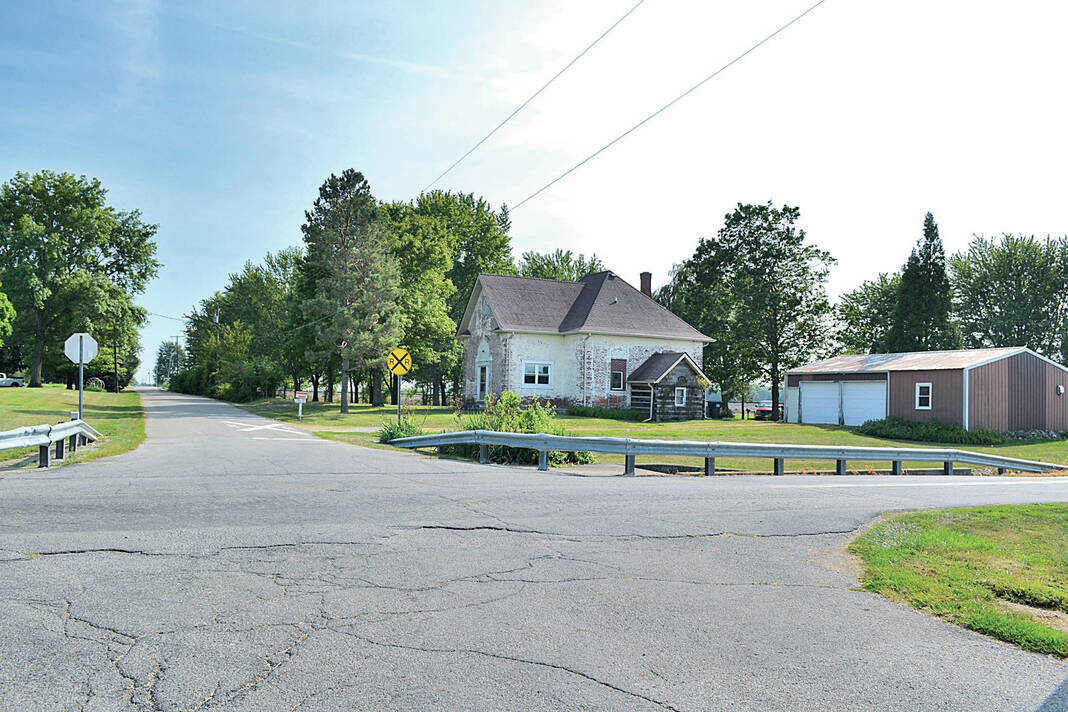
The old Keller School, also known as the “Buttermilk School,” still stands in the triangular-shaped property bounded by CR 500N, CR 300W, and what remains of the old railroad line.

Stephen Jackson
By Stephen Jackson | For The Times-Post
Among Madison County’s 14 civil townships, Lafayette is unique for several reasons.
First, it was named for the Marquis de Lafayette, a French general whose valuable assistance to the struggling American armies during our War for Independence gained him the immeasurable gratitude of the new nation.
To James Hollingsworth, who settled there in July 1836, goes the credit for suggesting the name for the only township in Madison County named for a foreign-born individual.
Perhaps the death of Lafayette less than two years before influenced the choice.
Not long after his arrival, Hollingsworth began a movement to officially organize the township.
That occurred on Nov. 9, 1836.
Although much credit goes to Mr. Hollingsworth, he was not the first to settle there.
That distinction goes to Henry Ry who, in 1831, brought his family from North Carolina and settled in Section 36 in the future township’s very southeast corner, where North Anderson is now located.
The mention of Section 36 brings up the second unique aspect of Lafayette Township.
After the War of Independence, the federal government recognized the potential growth of the new nation and the need to establish a land policy.
And so it was that the Land Ordinance of 1785 became law.
It stated the land was to be surveyed in a rectangular method with both north-south and east-west lines at six-mile intervals.
The six-mile squares were designated as Congressional Townships, and each one was divided into thirty-six one-mile squares or sections consisting of 640 acres.
The sections were then numbered 1 through 36.
This method was simple and efficient and was followed across the entire Northwest Territory, of which the future State of Indiana was a part.
Tenth in the order of organization, Madison County’s Lafayette Township is the only civil township in the county whose boundaries coincide with the congressional township lines as they were originally surveyed.
The other 13 are all modifications of the original survey lines.
The land surface of the township is generally flat.
That was a problem because standing water had no way to adequately drain, thus prohibiting successful farming.
This third unique aspect of the township was corrected in 1875 when an extensive system of artificial drainage was constructed.
The standing water is attributed to the origin of an unusual place-name in the township, a township sprinkled with many unusual place-names.
Florida Station is within a few rods of the geographical center of the county.
It was originally called Clark’s Station in honor of the Hon. Thomas G. Clark, on whose land it was located in 1856.
Florida Station was a station on the Pittsburgh, Cincinnati & St. Louis Railway, and nearly all the trains stopped there for, among other reasons, delivery of the daily mail.
The post office at Florida was abandoned in 1903 when free delivery of mail was instituted in rural areas.
A large amount of tiling was manufactured here during the 1870s and 1880s, by Rains & Guisinger, but demand for the product declined with the completion of ditching and draining of the township wet lands during that period.
The property was converted into a factory for the manufacture of brick.
It is believed the first steam sawmill in the township was built there in 1851 by George Millspaugh and James Stevenson.
The mill, operated by Wallace Van Winkle and Henry Rodecap, exploded with terrific violence in 1868, killing two men and injuring several others.
One explanation for the name Florida is that it was given that name by the Pennsylvania Railroad in selecting a name for its station there.
A possibility, but without much justification.
Another explanation was given by a Florida newspaper correspondent in an article that appeared in the Anderson Democrat on April 20, 1874.
“I have just exhumed the origin of the sweet name of our village.
“Tom Clark started from Anderson in a canoe, and having paddled to this locality to dispossess the bullfrogs, he could find no terra firma to rest upon.
“A few water lilies in bloom delighted his eyes, and a solitary clump of dog roses exhaled sweet fragrance to the breeze, reminding him of the state of Florida, hence its immortality.”
Before Florida Station there was another stop on the railroad, one with numerous names.
Soon after the completion of the P.C. & St. L. Railway through the township in 1856, a large grain warehouse was built at a point one mile and a half northwest of the present site of Florida, that was known for many years as Keller’s Station.
John Keller was the owner of all the land in that immediate vicinity.
A general store was also opened there.
Owing to an insufficient patronage, the storekeeper disposed of his stock of goods and the warehouse, which was likewise an unprofitable venture.
The closures caused the trains to discontinue stopping there.
With the warehouse failure the station was abandoned, and Clark’s Station was established as the main railroad stop in the area.
At one time the area of Keller’s Station was known by three other names, one whose origin is a rather comical story.
The P. C. & St. L. Railroad eventually became part of the Pennsylvania Railroad system.
Its trains used to stop at most hamlets along the route.
There was a stop about a mile and a half northwest of Florida called Mt. Herman.
But to those who lived in the area, it was better known as Buttermilk Station.
When a train stopped at Mt. Herman, one of the trainmen would run a few blocks down the road to the home of a relative to get a jug of buttermilk, which the crew would drink along the way.
Harry Cummins of Houston, Texas, told that Andy Osborn, a Pennsylvania conductor, was the man who ran to the home of Mrs. Isaac Osborn, grandmother of Mr. Cummins, to get the buttermilk.
The Mt. Herman, or Buttermilk Station, neighborhood was also known as the Keller Station community.
The old Keller School, also known as the “Buttermilk School,” was built on land that belonged to a Keller family.
That old school house still stands in the
triangular-shaped property bounded by County Road 500 North, County Road 300 West, and what remains of the old railroad line.
This same general area has enjoyed yet another name in its history.
The townsfolk counted on Keller’s Station to be a boom town.
But the grand visions never became a reality.
Read more about Keller’s Station and other places in Lafayette Township history in next week’s Times-Post.
Madison County Historian Stephen Jackson is leading a series of “First Sunday” presentations covering the History of Madison County townships. The talks are set for 2 p.m. on the first Sunday each month in the Bowman Room at Museum of Madison County History, 11 W. 11th St., Anderson. The talks began Sept. 4 and run through Nov. 5, 2023. The information he prepares for those presentations form the basis of this series of columns in The Times-Post.